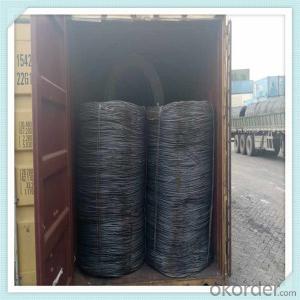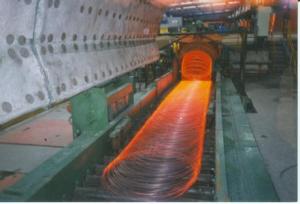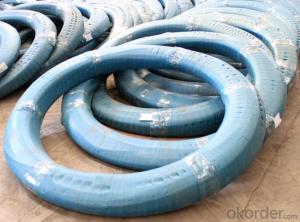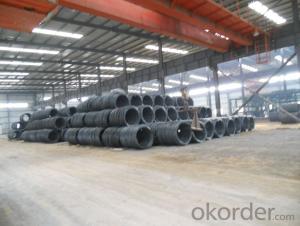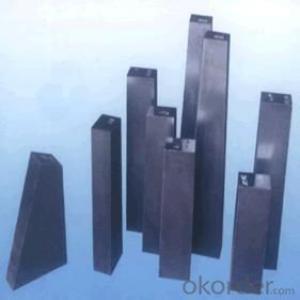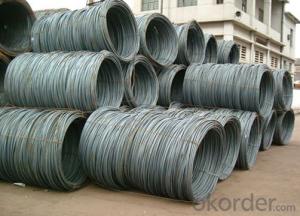Hot dip steel wire rod in different grade and size
- Loading Port:
- Tianjin
- Payment Terms:
- TT OR LC
- Min Order Qty:
- 100 m.t.
- Supply Capability:
- 19823 m.t./month
OKorder Service Pledge
OKorder Financial Service
You Might Also Like
Specification
Wire rod is a rolled alloy or nonalloy steel product, produced from a semi (e.g. bloom) and having a round,
rectangular or other cross-section. Particularly fine cross-sections may be achieved by subsequent cold
forming (drawing). Wire rod is wound into coils and transported in this form.
Features
1、Pure steel quality, stable chemical contents, small tolerance.
2、Constant Quality, good drawing performance.
3、High dimension accuracy degree, accuracy degree of Level C up to 80%, smooth surface, less scale,
easy to be pickled.
4、Automatic bundling with 4 lines by Machine in tidy and good looks
5、Big high quality percentage, small coil percentage, and heavy coil weight for Hard Coil.
6、High sorbitizing percentage.
Product Description :
Standard | AISI, ASTM, BS, DIN, GB, JIS |
Material/steel grade | Q195-Q235,SAE1006B,SAE1006CR, SAE1008B, SAE1008CR, SAE1010B, SAE1018B, or according to customers requirements |
Wire Gauge | 5.5-12mm |
Coil weight | 1.8-2.1mts |
MOQ | 25MT |
Delivery Time | 15-30 days after receipt of L/C or deposit by T/T |
Packing | In coil and load in container, if large quantity, by bulk vessel; Can be packed as customers' special requirements |
Payment terms | 1).100% irrevocable L/C at sight. 2).30% T/T prepaid and the balance against the copy of B/L. 3).30% T/T prepaid and the balance against L/C |
Application | widely used in machinery parts, manufacturing industry, electronics industry, metal tools and others |
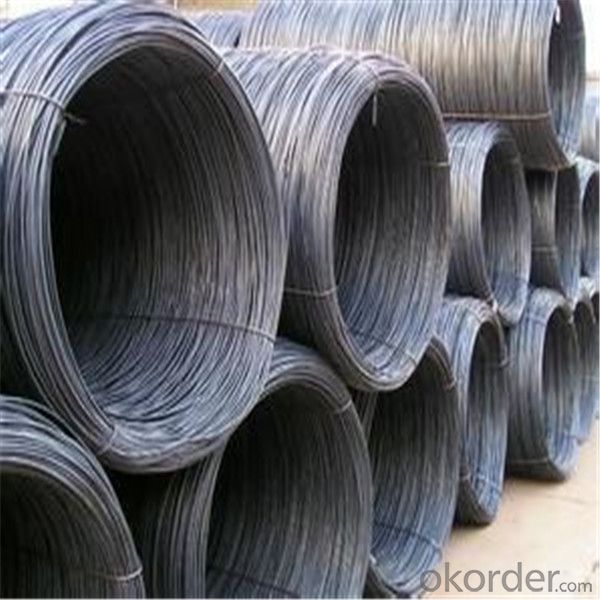
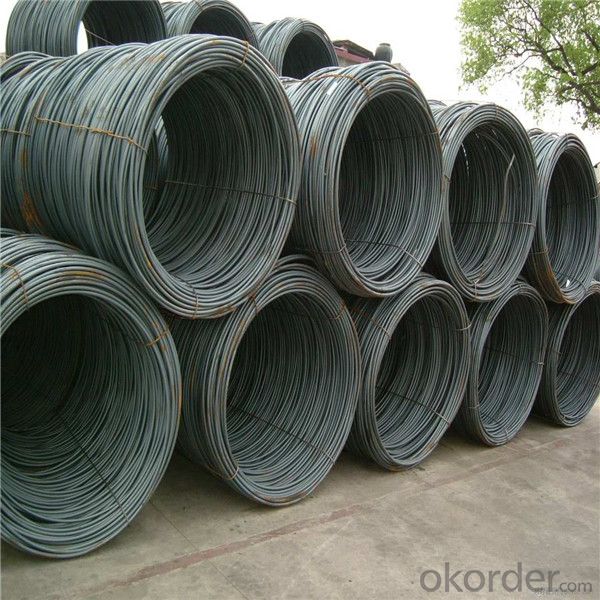
Application :
It generally used in braiding the hose for bathing product and machinery. With it
good flexibility, resistant to high temperature and resistant to corrosion, it
used widely in many industries.
Packing :
Hot-rolled wire rod is held in a unit with at least four steel straps in the
transverse direction and transported and stored without further packaging.
Before
the steel strapping is applied, the wire rod must be sufficiently compressed.
The strapping is fixed in the transverse direction with a single circumferential
strap so that the strapping does not slip and cause the coil to come apart.
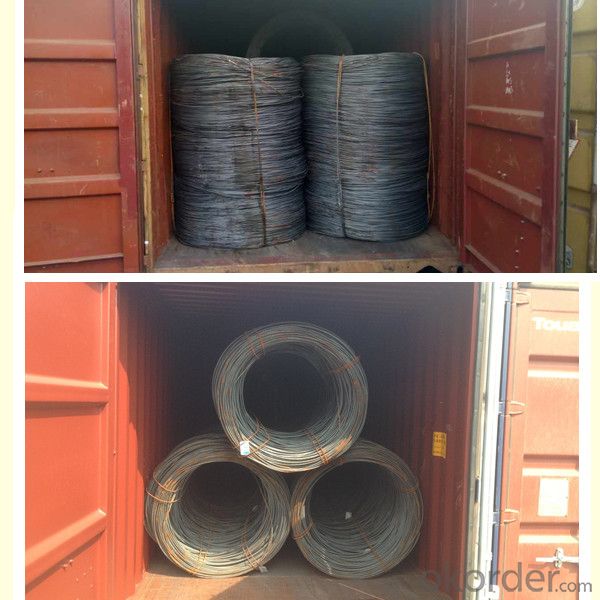
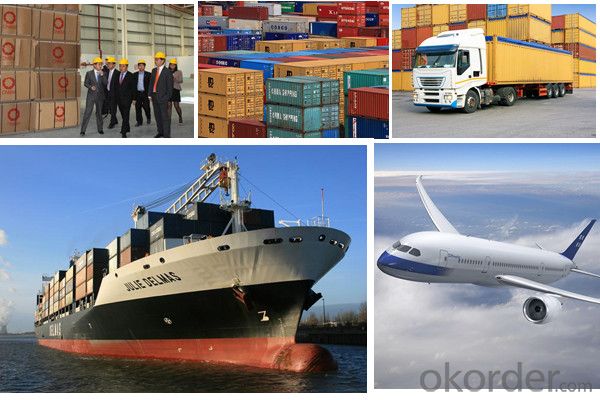
Our service:
(1) We cooperate with famous factories with advanced equipment and well trained workers.
(2) We can provide factory price with trading company service.
(3) We continuously work on the improvement of our processes, guaranteeing
consistently high standards of quality to keep none compensation.
(4) We guarantee 24 hours response and 48 hours solution providing service.
(5) We accept small order quantity before formal cooperation.
(6) We deliver the agreed quality at the agreed time, reacting to changes in
customer wishes in a flexible way.
(7) Due to our volume and selling power, we have excellent freight rates with
shipping lines.
(8) We strive to always be fair and honest in our dealings with customers.
(9) We strive to work together with customers to achieve much more than we can
achieve alone.
(10) Through our passion and commitment we aim to be a market leader in all our
key markets. To maintain our position as market leader we must continue to add
value in all that we do.
FAQ:
1.Q: What's your MOQ(minimum order quantity)?
A: One full container, mixed acceptable .
2. Q: What's your packing methods?
A: Packed in bundle or bulk ..
3. Q: How can I buy CNBM products in my country?
A:Please send us an inquiry or email ,we will reply to you if there is distributor in your country
4. Q: Can we visit your factory?
A: Warmly welcome. Once we have your schedule, we will arrange the
professional sales team to follow up your case.
5. Q: How long does it take to get the product if i place an order?
A:With the process of your requirements,we will pack and deliver in 3
-7 days. If it is by sea shipment,it will take 15-45 days depending on different locations
- Q: How is steel wire rod used in the manufacturing of wire rope slings for marine applications?
- Steel wire rod is a crucial component in the manufacturing of wire rope slings for marine applications. These slings are extensively used in various marine industries, including shipping, offshore oil and gas, and fishing. To begin with, steel wire rod serves as the raw material for wire rope slings. It is typically made from high-quality carbon or alloy steel, which ensures the strength and durability required for marine applications. The steel wire rod is usually produced in a continuous casting process, resulting in a long, cylindrical shape. Once the steel wire rod is obtained, it undergoes a series of manufacturing processes to transform it into wire rope slings. The first step involves drawing the steel wire rod through a die to reduce its diameter and increase its length. This process is repeated multiple times to achieve the desired wire diameter. The drawn wire is then cleaned to remove any impurities or surface contaminants. Next, the cleaned wire is twisted together to form strands. The number of strands can vary depending on the desired strength and load capacity of the wire rope sling. These strands are then tightly wound around a central core, which provides stability and support to the wire rope. The final step in the manufacturing process is the application of protective coatings to enhance the wire rope sling's resistance to corrosion and wear. Marine environments are highly corrosive due to the presence of saltwater, which can lead to the degradation of steel. Therefore, coatings such as galvanization or zinc plating are commonly applied to the wire rope to provide a barrier against corrosion. Once the steel wire rod has been transformed into a wire rope sling, it is ready for use in various marine applications. Wire rope slings are used for a wide range of purposes, including lifting heavy loads, securing cargo, and towing vessels. They are known for their high strength, flexibility, and resistance to abrasion, making them ideal for demanding marine environments. In conclusion, steel wire rod plays a vital role in the manufacturing of wire rope slings for marine applications. It serves as the raw material for wire rope production, undergoes various manufacturing processes, and is ultimately transformed into a strong and durable sling. Wire rope slings made from steel wire rod are essential tools in the marine industry, providing reliable and safe lifting and securing capabilities.
- Q: How is steel wire rod packaged for transportation?
- Steel wire rod is typically packaged in various ways for transportation, depending on the customer's specific requirements and the chosen mode of transportation. One commonly used packaging method involves creating coils by tightly winding the wire rod around a central core. These coils are convenient to handle and transport, and their size and weight can be adjusted according to the customer's needs and the transportation method. To prevent damage during transportation, the coils are often wrapped in protective materials like plastic or paper. Apart from coils, steel wire rod can also be packaged in bundles. These bundles consist of a certain number of individual rods, securely bound together using straps or wire. This packaging is usually preferred for larger quantities of wire rod as it allows for easier handling and loading onto trucks or shipping containers. Bundles are also wrapped with protective material to ensure safe transportation. For international shipping, containers may be necessary. In such cases, the wire rod can be loaded into containers as either coils or bundles, depending on the customer's preference and the efficiency of loading and unloading at the destination. Overall, the packaging of steel wire rod for transportation prioritizes safe and efficient delivery to the customer. Factors such as the quantity of wire rod, the mode of transportation, and the customer's specific requirements are taken into account. By utilizing coils, bundles, or containers, steel wire rod can be securely packaged, minimizing the risk of damage and ensuring its arrival in the desired condition.
- Q: How is steel wire rod used in the manufacturing of wire forms for bridge cables?
- Steel wire rod is a crucial component in the manufacturing of wire forms for bridge cables. It is primarily used as the raw material to produce the wire strands that make up the bridge cables. These wire strands are then twisted together to form the cables that provide the necessary strength and support for bridges. The steel wire rod goes through a series of processes to transform it into wire strands suitable for bridge cables. First, the rod is cleaned and descaled to remove any impurities and contaminants. It is then heated to a specific temperature and passed through a series of dies to reduce its diameter and increase its length. This process is known as wire drawing. After wire drawing, the steel wire rod is further processed through a stranding machine. Multiple wire strands are twisted together in a specific pattern to create a stronger and more durable cable. The twisting process ensures that the individual wire strands are tightly bound together, providing the necessary strength to withstand the load and tension experienced by bridge cables. The quality of the steel wire rod used in the manufacturing process is crucial to ensure the strength and performance of the bridge cables. It needs to have the right combination of tensile strength, ductility, and corrosion resistance. High-quality steel wire rod that meets specific standards and specifications is selected to ensure the reliability and longevity of the bridge cables. In conclusion, steel wire rod is a fundamental material used in the manufacturing of wire forms for bridge cables. It undergoes various processes, such as wire drawing and stranding, to create wire strands that are then twisted together to form the cables. The quality of the steel wire rod is essential to ensure the strength and durability of the bridge cables, making it a critical component in the construction and maintenance of bridges.
- Q: What are the different types of steel wire rod surface treatment chemicals?
- There are several types of steel wire rod surface treatment chemicals, including pickling agents, passivation chemicals, phosphating compounds, and various coatings such as zinc, copper, or chrome. These chemicals are used to remove impurities, prevent corrosion, increase adhesion, and enhance the overall quality and durability of the steel wire rod.
- Q: How is steel wire rod used in the production of wire rods for reinforcement?
- Steel wire rod is used in the production of wire rods for reinforcement by being hot rolled into thin, long and continuous strands. These wire rods are then further processed and cold drawn to achieve the desired strength and size, which makes them ideal for reinforcing concrete structures. The wire rods are subsequently cut into smaller lengths and formed into various shapes such as bars, meshes, or grids, which are then embedded within concrete to enhance its tensile strength and overall stability.
- Q: How are steel wire rods used in the production of wire hangers?
- Steel wire rods are used in the production of wire hangers as the primary material. These rods are processed through various manufacturing techniques such as drawing, straightening, and cutting to create the desired length and thickness of wire needed for the hangers. The wire rods serve as the structural backbone of the hangers, providing strength and durability to support and hold clothes.
- Q: Can steel wire rod be used in the production of reinforcing bars?
- Steel wire rod has the ability to be utilized in the manufacturing of reinforcing bars, commonly referred to as rebar. These rebar are crucial for fortifying and reinforcing concrete structures, such as buildings, bridges, and highways. Steel wire rod serves as a raw material during the manufacturing process of rebar. Typically, this wire rod is composed of top-notch steel and is drawn into the desired thickness and shape to meet the specific requirements of reinforcing bars. By doing so, it furnishes the necessary strength and durability needed to enhance the structural integrity of concrete, thus preventing any potential cracking or failure. Consequently, steel wire rod stands as an essential element in the production of reinforcing bars.
- Q: What are the common industry trends for steel wire rod?
- Some common industry trends for steel wire rod include increased demand from construction and automotive sectors, advancements in production technologies for higher quality and strength, growing emphasis on sustainability and environmental standards, and a shift towards digitalization and automation in manufacturing processes. Additionally, there is a focus on developing innovative alloys and coatings to enhance the performance and durability of steel wire rods in various applications.
- Q: What are the standard impact strength requirements for steel wire rod?
- The impact strength requirements of steel wire rod can differ based on the specific application and industry standards. However, in general, steel wire rod needs to have good impact strength properties to ensure durability and resistance against breakage in dynamic loading situations. Various international standards organizations like ASTM International, ISO, and national standards bodies establish the impact strength requirements. These standards offer guidelines for determining the impact strength of steel wire rod through standardized testing methods. To fulfill the standard impact strength requirements, steel wire rod is often subjected to impact tests such as Charpy or Izod tests. These tests involve striking a notched sample of the wire rod with a pendulum hammer and measuring the energy absorbed during fracture. The results provide an indication of the material's ability to endure sudden shock or impact. The specific impact strength requirements for steel wire rod can differ based on factors such as the intended application, industry regulations, and customer specifications. For instance, wire rod used in construction may have different impact strength requirements compared to wire rod used in automotive manufacturing. In summary, the impact strength requirements for steel wire rod are determined by international and national standards organizations and can vary depending on the application. Complying with these requirements ensures that the wire rod possesses the necessary strength and resilience to withstand impact and dynamic loading conditions.
- Q: What are the different types of steel wire rod coatings used for electrical conductivity?
- Various types of coatings are used for electrical conductivity in steel wire rods, each with their own distinct characteristics and advantages. Copper is a commonly used coating for electrical conductivity. It possesses excellent electrical conductivity properties, making it an ideal choice for applications that require high electrical performance. Copper coatings can be applied using methods such as electroplating or hot-dipping, ensuring a uniform and durable coating on the steel wire rod. Silver is another coating used for electrical conductivity. It is known for its exceptional electrical conductivity, surpassing even that of copper. It is often utilized in applications that demand the highest level of electrical performance, such as high-frequency cables or precision electronic components. Silver coatings can be applied through electroplating or electroless plating processes, resulting in a thin and highly conductive layer on the steel wire rod. Zinc, although it may not possess the same level of conductivity as copper or silver, is also a commonly used coating for electrical conductivity. Zinc coatings are frequently employed for corrosion protection in electrical applications, as they create a sacrificial layer that prevents the underlying steel wire rod from corroding. Additionally, zinc coatings can enhance the electrical conductivity of the steel wire rod to some extent. Tin coatings are utilized for electrical conductivity as well. Tin is known for its low electrical resistance and good corrosion resistance properties. Tin coatings can be applied through electroplating or hot-dipping processes, resulting in a reliable and conductive layer on the steel wire rod. There are also specialized coatings, such as nickel or gold, that can be used for specific applications requiring unique electrical conductivity properties. Nickel coatings offer good electrical conductivity and corrosion resistance, making them suitable for various electrical and electronic applications. Gold coatings, on the other hand, are highly conductive and provide excellent corrosion resistance, making them ideal for high-end electronic components or connectors. In conclusion, the coatings used for electrical conductivity in steel wire rods encompass copper, silver, zinc, tin, nickel, and gold. Each of these coatings offers specific advantages and is selected based on desired electrical performance, corrosion resistance, and application requirements.
Send your message to us
Hot dip steel wire rod in different grade and size
- Loading Port:
- Tianjin
- Payment Terms:
- TT OR LC
- Min Order Qty:
- 100 m.t.
- Supply Capability:
- 19823 m.t./month
OKorder Service Pledge
OKorder Financial Service
Similar products
Hot products
Hot Searches
Related keywords
